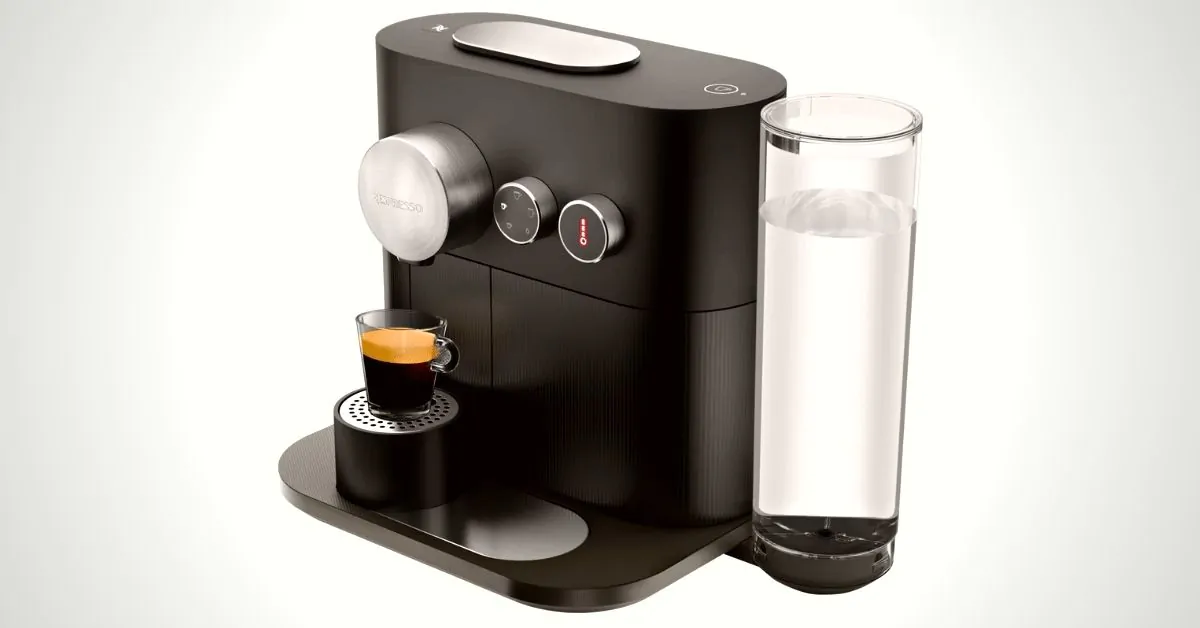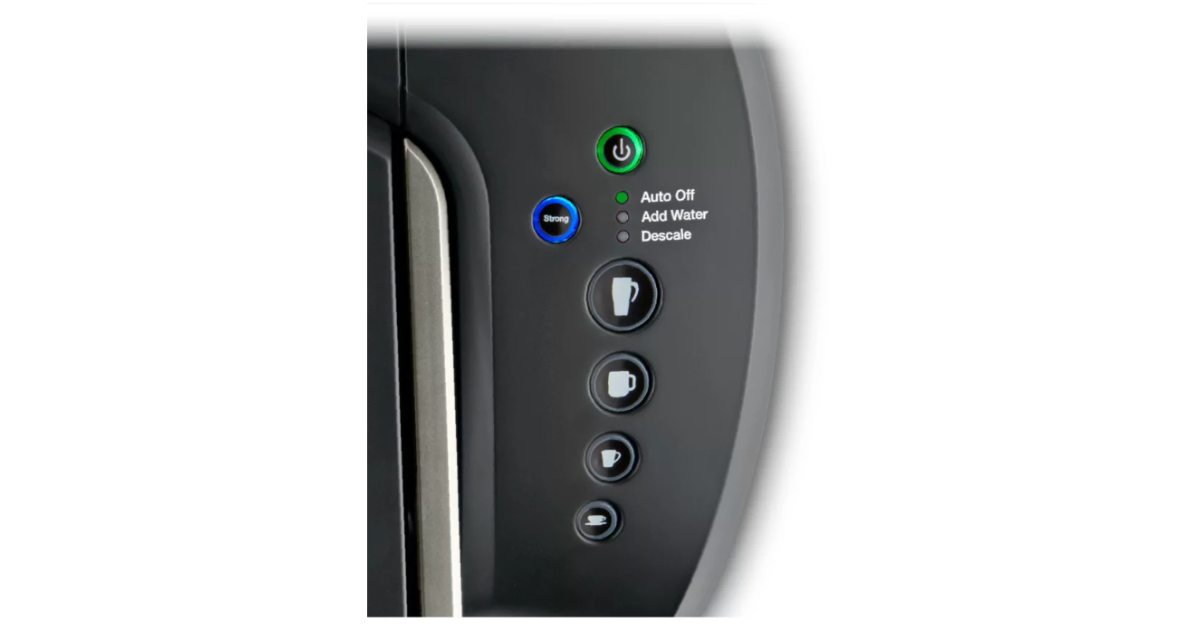Why is my Nespresso machine leaking? Jump into our guide and check out the possible reasons for Nespresso machine leakage and how to fix it.
Is your Nespresso leaking water?
You should probably make your morning coffee using another method because we’re about to get our hands dirty.
There are many reasons why your Nespresso machine might malfunction in such a way. Lucky for you, I’ve been through most of them, so I can say that the issue doesn’t have to be serious.
But before we can say that for sure, let’s go through all possible issues for your Nespresso machine leaking.
Let’s dive in!
Reasons Why Your Nespresso Machine is Leaking
So, your Nespresso coffee machine is leaking water. But why?
Well, there’s actually more than a single reason behind that.
1. The Nespresso machine is leaking from the bottom
Is there a water puddle underneath your Nespresso machine? Maybe it’s just a few drops on the counter, but that still indicates the water leak from the bottom of your coffee maker.
There are actually three possible causes for this situation:
The water tank is leaking
First and foremost, your water tank might be where the leaking water is coming from.
There’s nothing great about that except for the fact that it’s somewhat easy to notice.
Here’s what you need to do:
- Remove the water tank from its designated position and check if there are any cracks on it where the water might come through.
- If the water tank is whole, then you’ll need to check out the part where it connects to the machine. Don’t worry. There’s no disassembling required for this step. Instead, fill the water tank with water and leave it on the counter. If water forms underneath it, then you’ve got your answer.
So, it turns out that the water tank was the issue. Now what?
Unfortunately, you don’t have many options. In fact, the only thing you can do is get a new water reservoir. Luckily, the brand sells replacement parts online, so finding one shouldn’t be hard.
Internal pipework is faulty
In the case where water leaks through the bottom, you should always start by checking the water tank first. Why? Because it’s the easiest one to figure out and fix.
Not trying to be pessimistic, but water leaking from the bottom is always a serious issue. And if the water tank is alright, the next thing to check is the internal pipework.
And as you probably have guessed – it will require some disassembling.
Now, I’m definitely against opening up your machine for a quick fix if it’s under warranty. In fact, doing so would only void it, which is not something you want. You never know when you might need one – maybe even in this case.
If your warranty period is over, then you can take a look. Just keep in mind that unless you’re experienced with doing such things, this might not be of much help in figuring out what’s wrong.
Here’s what you should do:
- Unplug the Nespresso machine from the wall outlet.
- Remove the back screws and open up the rear panels to take a better look inside.
- Check for parts that have come loose and are not attacked to their designated place.
If you’re not comfortable with opening your Nespresso, don’t worry. You’re not alone. In that case, it’s always better to seek professional help.
The pump or heating element is faulty
Finally, water at the bottom of the machine might be caused by a faulty pump or the heating element.
You see, the high temperatures Nespresso is capable of achieving might be good for your coffee. But they’re not great for internal components, especially the pipes, and seals.
As you probably know, metal expands when heated and contracts once it’s cool. Now, imagine your machine doing that five times a day. It’s clear how easily these parts can wear out that way.
How to figure out if this is the case?
Again, you’ll want to open up your machine. If it’s still covered by warranty, you don’t want to do that. Instead, contact customer support and let the manufacturer solve the issue.
But if the warranty period is over, here’s what you can do:
- Unplug the Nespresso machine from the wall.
- Grab a screwdriver and remove the screws on the rear panels.
- Check out the boiler. If it’s slightly darker, brown, or gray, then this might indicate that water has been dripping onto it for some time now.
Unfortunately, this is all you can do yourself in this case. Either contact customer support or seek help from a professional technician.
2. Nespresso is leaking water into the capsule box
What if water is somehow ending up inside the capsule box?
That means that water failed to get inside or out of the capsule in the way it was designated to.
Well, there could be several reasons for that as well. And luckily, they’re much easier to fix compared to the bottom-leaking water issue.
You are using a defective or 3rd party capsule
Are you using pods by other brands or maybe reusable ones?
While there’s nothing wrong with using non-Nespresso pods, that could actually be the reason why water is leaking inside your capsule box.
Why does that happen?
Simply because those capsules might not be exactly the same size as the original ones. Which is pretty dumb, I agree.
To figure out if that’s the case, you’ll need one original Nespresso capsule.
So, what should you do?
Simply brew a cup of coffee with the original one. If it’s working properly, then the problem lies in your 3rd party capsules.
Now, that doesn’t mean you need to stick with the original Nespresso pods. But you might want to switch to a different brand that has better-fitting pods.
The nozzle is blocked
Unfortunately, using pods of the wrong size doesn’t always lead to a leaky coffee maker.
More often than not, the issue lies in the nozzle.
You see, every time you’re brewing coffee, there’s a bit of coffee residue on the nozzle. Now, if you’re not keeping up with regular maintenance, that residue can easily build up and even cause clogging.
And when the nozzle is blocked, that water can’t come through where it should. Instead, it will leak somewhere – most logically, the capsule box.
To clean the nozzle, you can use the pin-cleaning tool stored under the water tank. Basically, you just need to push the needle part through the holes to remove the gunk. That’s all.
The capsule holder is dirty
The inside of your capsule holder is dirty? Don’t beat your head too much about it. That’s often the case with many Nespresso users, even if we do our best to stay on a maintenance schedule.
But you should keep in mind that the dirt and grime inside your Nespresso can actually cause it to stop working properly. And in case the coffee pod doesn’t get pierced, all that pressure built up inside the machine will have to be pushed somewhere.
In this case, the fix is quick and easy, but it does require a bit of manual work. By this, I mean you need to clean that Nespresso as soon as possible.
For this, you’ll need a stainless steel wire brush, soap, and a bit of hot water to scrub the grime away.
3. Your Nespresso machine needs descaling
Finally, your Nespresso coffee machine might be leaking because maintenance is long overdue. And by that, I mainly mean it’s time for descaling.
Nespresso recommends descaling every six months or after you’ve made about 600 coffee with it. Of course, whichever comes first, is the cue for descaling.
To be honest, that’s quite a lot of time. I’d suggest doing descaling at least every two to three months to keep your machine working properly.
Descaling a Nespresso is pretty simple. There are some differences between different models, but the premise is the same.
You need to:
- Empty the capsule holder and the drip tray.
- Fill the water tank with a mixture of Nespresso descaling solution and water, as instructed by the manual.
- Close and lock the machine.
- Enter the descaling mode by pressing the designated buttons. This may differ between models, so it’s best to check out the manual for more detailed instructions.
- The cycle will start, and your Nespresso coffee machine will stop automatically when the descaling is done. At that point, you want to rinse the water tank and refill it with fresh water. Then, run the same cleaning cycle again with clean water to rinse your machine from the descaling solution. Your Nespresso is then good to go.
To Sum Things Up About Nespresso Machine Leaking
If your Nespresso is leaking water, there could be several causes for that.
In case the water forms inside your capsule holder, then the issue is probably easy to fix.
Leaking from the bottom, on the other hand, typically indicates more serious problems. And more often than not, it involves contacting Nespresso customer service and letting the manufacturer solve the issue.
However, sometimes overdue descale is the cause of the leakage, and simply running the cycle will fix it. So before you resort to contacting customer support, make sure to try all options first.
Is your Nespresso blinking orange? Here’s our in-depth guide on what the problem might be and how to fix it.










